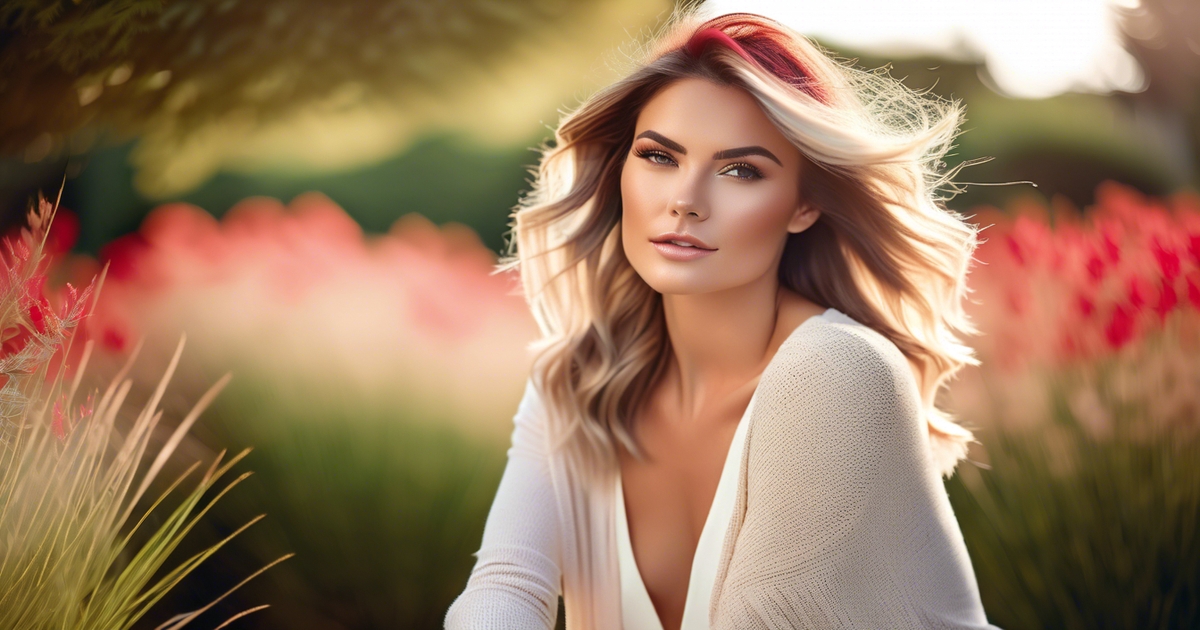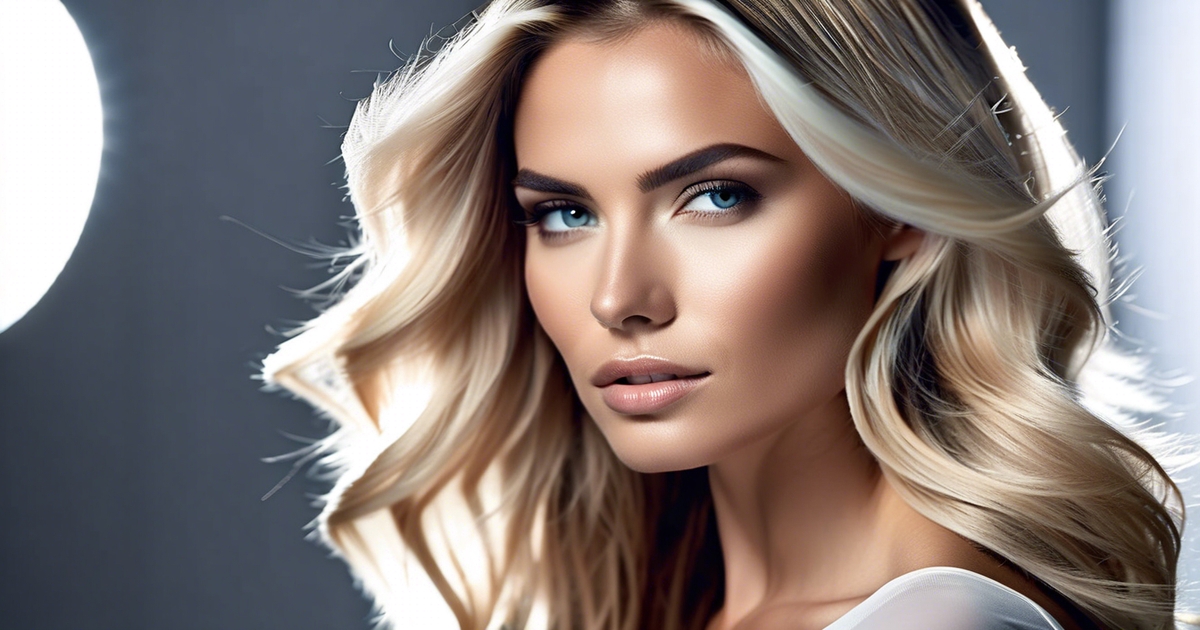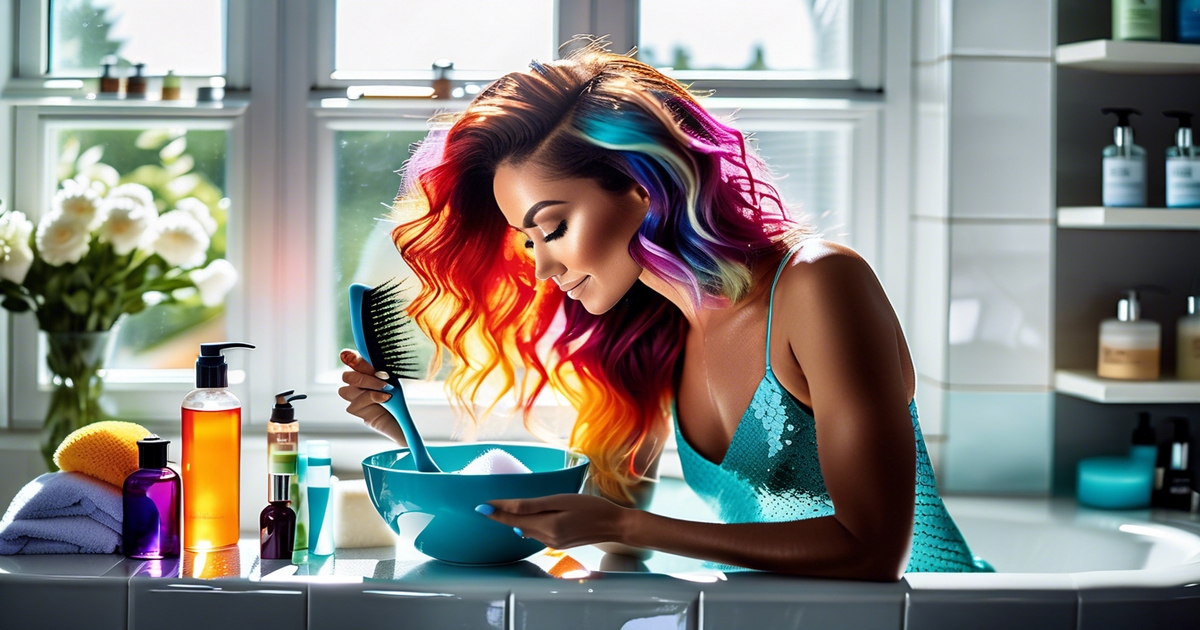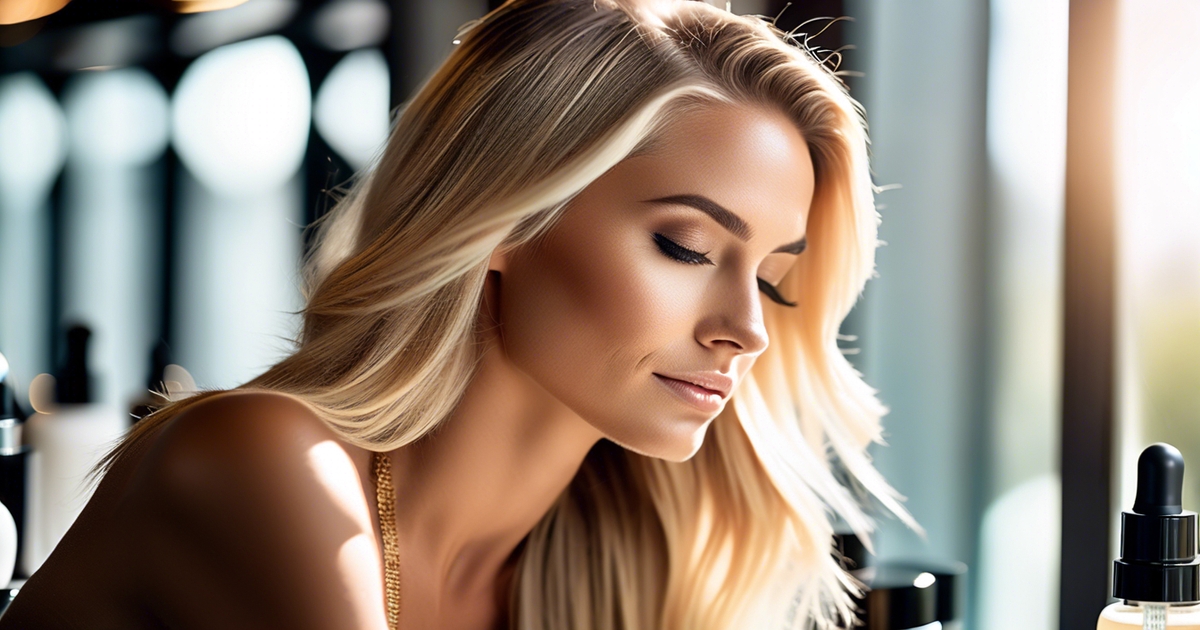The Best Hair Colors for the Cool Summer Palette

Key Takeaways
- Determine your undertone first to ensure a cool summer coloring and construct color selections based on soft, ashy, muted colors. Try silver vs. gold, observe sun reaction, and seek out low contrast between hair, eyes and skin.
- Pick top colors that flatter cool summers like light ash blonde, pearl, ash brown, charcoal brunette, muted coppers, sophisticated silvers and soft pastels. Stay away from brassy, golden or high-contrast colors, which can over-power a cool, muted complexion.
- Apply root-to-tip color with contemporary methods that maintain dimension soft and seamless such as microlights, delicate highlights, shadow roots and low-contrast balayage. Ask your colorist to lean into cool, ashy tones for a seamless, natural look.
- Pair color with texture for maximum flattering and effortless styling. Mix in babylights for fine hair, blended highlights for thick hair and dimensional low-contrast accents for curls that add movement without sharp lines.
- Color at home with caution — opt for demi- or semi-permanent **cool shades**, perform strand tests and use sulfate-free, color-safe care. Avoid warm tones, double, triple or quadruple overlapping applications, and high-lift bleaching without toners to avoid brassiness.
- Keep cool with UV protection, hydrate and tone with purple or blue shampoos and occasional glosses. Schedule touch-ups and toning in accordance to your shade depth to maintain color freshness and balance.
🎨 Discover Your Personal Color Palette
Ready to discover your perfect color palette? Use our expert analysis to identify the colors that make you look and feel your absolute best. From skin undertones to feature matching, find your ideal color combinations.
Find Your Color Palette →Cool summer hair colors are icy blonde, ash brown, soft mushroom brown, smoky lilac, and muted teal. These colors neutralize warmth and are sun and heat resistant, with less brassiness as time goes on.
For low maintenance, gloss with a blue or purple base maintain cool tones sharp. Fine hair glimmers with pearly highlights and curls radiate with cool babylights.
To schedule a shade that suits skin tone and schedule, the subsections detail.
📚 Recent Articles
Understanding your cool summer tone

Cool summer equates to cool skin tones, exhibiting a soft, muted appearance and low contrast across features. The ideal hair color should echo that quiet mood: ashy, cool, and refined rather than bold or warm. Professional color analysis guides you in matching shades to your summer color palette, ensuring hair, skin, and eyes remain serene and harmonious.
Identifying undertones
Glance at your bare skin in natural light. If you notice pink, blue, or cool neutral cast instead of peach or gold, you're probably in the cool summer range. Most observe a subtle, soft complexion that can appear slightly sallow until the proper colors turn it to a radiant, almost silvery glow.
Drape silver and gold jewelry next to your face. Silver, on the other hand, flattered cool undertones more, smoothing redness and sharpening the eye color. Gold can sometimes leave the skin looking drab or yellow.
Take into account your sun reaction. If you burn first, then get a soft, muted tan that's cool summer. A few cool summers do tan a little and remain fair.
- Common eye colors: blue, grey, green, soft hazel
- Natural hair colors: ashy blonde to medium ash brown. Some with medium brown to black hair that reads cool vs warm.
Defining traits
Your complexion reads soft, milky, or rosy, never sharp or high-contrast. Features sit close in depth: hair, eyes, and skin differ by a shade or two, not five. That lower contrast dictates color decisions.
Hair is usually light to medium with an ashy tone. Highlights are best smokey, pearl or cool beige. Very dark or warm toned hair is less common, but some cool summers have darker skin and medium brown to black hair that still appears cool.
Muted, mixed colors lend a calm grace to the skin. Deep raspberry, plum, slate and dark blues flatter. Blue-based pinks for lips appear crisp. Browned or golden 'flesh tone' shades can muddy the face and mute the eye color.
Common misconceptions
Not every blonde or fair skinned person is a cool summer. Undertone rules! Some cool summers are deeper skin/cool dark hair, it's the cool base and mutedness that make the season.
The palette is not just icy or platinum. Soft ash, cool beige, smoky taupe, mushroom brown and muted espresso usually wear better than stark ice. Too warm or golden hair will clash, pushing the skin toward sallow. Ashy, muted colors bring equilibrium.
Avoid high contrast and loud colors. Opt for low-contrast, cool hues and preserve them with clear or violet glosses every 6–8 weeks to revitalize tone and infuse soft shine without warmth.
The best cool summer hair colors

Cool summer hair colors remain soft, muted and delicate to reflect the season's palette. I'm talking about tones with blue, purple or pink undertones that neutralize warmth and brighten the face.
Stay away from brassy, golden or copper-heavy shades that lean orange, as they can battle with cool skin and come off dull in strong sun. Go for shades that play up natural coolness and wear beautifully light to dark.
Recommended names and why they work:
- Light Ash Blonde: pale beige with gray reflect; cancels yellow.
- Pearl Blonde: icy beige with soft pink-violet tone. illuminates.
- Silver Ash Blonde: smoky silver; sleek and modern.
- Ash Brown: taupe-based brown; zero red.
- Charcoal Brunette: deep cool brown with slate cast.
- Rose Brown: brunette with pink-violet glow; subtle and chic.
- Soft Copper Ash: toned-down copper with beige base.
- Spiced Rum: cool cinnamon-brown; muted, not orange.
- Jet Black: inky, blue-based black; crisp contrast.
- Platinum Silver: high-lift white with silver glaze.
Schedule salon appointments every 6–8 weeks to maintain tone clarity.
1. Ashy blondes
Choose light ash blonde, silver ash blonde, or pearl blonde to compliment cool skin and prevent any sallow cast. These tones exist in a peaceful space, no gold, no honey, so they appear fresh alongside peach or blue undertones.
Plus, ashy highlights or a delicate balayage for depth minus the warmth. Keep placement fine around the face for lift and a cooler root melt for an easy grow-out.
Avoid yellow or golden blondes that make the complexion 'flat'. Purple shampoo once a week to zap brass, switch with a moisturizing mask to nix dryness.
2. Cool brunettes
Opt for cool brown, ash brown or charcoal brunette for a sophisticated, even hue. A taupe base keeps red at bay yet still provides shine.
Thread through soft ash highlights for dimension. Avoid reddish or golden browns that flash orange outside. This family works on light to dark levels and compliments beautifully with rose brown or a blue-black glaze for evening polish.
3. Muted reds
Soft copper, cinnamon gloss and spiced rum create the gentle sun-warmed glow — no bright orange in sight! Try to find some ashy or beige undertones to tone down the red.
These tones provide contrast but maintain cool summer characteristics front and center. Great choice when transitioning from brunette or blonde and seeking pink without the wow!
4. Silver and grays
Lean into natural silver or gray for a contemporary, chic rendition that reflects the cool palette. Fire up vibrancy with silver glosses or violet toners, or fan silver highlights through blonde or brunette bases for subtle dimension.
Put blue or purple shampoos to work preventing yellowing and maintaining crisp finishes.
5. Soft pastels
Test out whisper-light lavender, baby pink or mint for a flirty pop. Best over a white-platinum base for authentic color.
Pastels require soft treatment and additional maintenance. Whether you keep them as peekaboo panels, tips or halo highlights.
Deep raspberry, plum or dark blue streaks can pop as well while staying cool.
Techniques for a modern look

Modern color emphasizes softness with diffused highs and lows, **cool summer palette** tones, and blends that respect natural hair colors. Aim for hushed transitions of shades that flow with light.
Subtle highlights
Microlights—just a little wider than a thread—lift the hair a shade or two and hold the finish translucent. Fine, ashy ribbons around the face and crown emulate how sun bleaches strands in mid-summer. This adds brightness without pushing the hair brassy.
Soft amber or beige can warm the lightest points all while remaining neutral. This equilibrium panders to cool summer skin by maintaining a calm base and luminous edges. Avoid chunky or high-contrast bands that read stripey in bright light.
If you've got wavy or curly hair, position microlights on the outer bend of each wave to capture motion. Sprinkle in coordinating lowlights a shade or two deeper to construct a contemporary, dimensional feel.
A subtle foil-and-balayage blend can layer depth near mid-lengths and keep the hairline airy. For brunettes, cool, smoky espresso threads light-up ends without any redness. Blondes can opt for warm, buttery veils over an ashy base for a soft glow.
A whisper of pastel—mauve, steel blue or rose beige—seems light and modern when knitted very fine.
Shadow roots
Shadow roots in ashy or cool brown tones ground the look at the scalp and extend time between salon visits. Smudge the root 2–3cm into lighter ends for a lived-in shift that grows out cleanly.
Match the root to your natural color or sit a shade cooler for polish. This shields the lightness throughout the lengths while grounding the face frame. It cuts down on upkeep, you can stretch touch-ups 8–12 weeks with some careful blending.
For golden-under-toned brunettes, combining a cool root melt with soft honey highlights creates a contemporary sun-kissed glow. Cool root soothes heat, golden threads maintain depth.
Low-contrast balayage
Select low-contrast balayage when lift without hard lines is what you desire. Hand-painted, cool muted shades—ashy blondes, cool browns, or foggy pastels—maintain peace with cool summer features and bypass jarring tone leaps.
Balayage is perfect for a natural sun-kissed look since the paint sits on top and diffuses at the mid-lengths. Make sure transitions are feathered, no abrupt jumps from root to tip.
Sprinkle in some foiled microlights at the parting to illuminate the crown while balayage muffles the remainder. Pair cooler pieces next to warmer golden undertones to get a softened, blended, modern look.
This contrast, maintained soft, makes hair appear thicker and more polished. For darker bases, smoky brown sweeps with espresso lowlights add depth. For blondes, pearly ribbons over buttery highs create a luminous, beach-light effect.
| Technique | Best for cool summers | Key benefits |
|---|---|---|
| Microlights | Fine blending, anti-brass | Subtle lift, more movement, low visual contrast |
| Shadow roots | Longer grow-out | Depth at scalp, seamless upkeep, color stays fresh |
| Low-contrast balayage | Soft dimension | Sun-kissed look, diffuse edges, tone harmony |
The texture and color connection
Texture shifts how rad summer hair colors come across in real life. Fine, thick and curly strands reflect light differently, so the same shade can look bright on one head and flat on another. Cool summer palettes tend to lean soft and muted—ash blondes, cool browns, rose beige, pale pinks, and blues from powder to navy—so your best bet is to select shades and methods that align with your hair's flow and how it captures light.
Seasonal daylight matters as well, as the mid-summer sun washes out pale tones at noon, while evening light makes ash shades look deeper. Anticipate transitions inside, too, because certain shades veer cool or warm beneath various bulbs.
For fine hair
Light, multi-dimensional shades create lift, making them ideal for summer hair color. Soft ash blonde, crème brûlée, rose beige, or a cool sand brown form the illusion of more strands as they rebound light across the surface. If your skin has blue or pink undertones, these cooler notes prevent the hair from reading yellow, which is crucial for those with cool summer undertones.
Babylights do great for adding dimension. Super thin strips laid close together add bulk to the visual base — no hard edges. Concentrate near the face and crown to phony-up volume where you need it the most, enhancing your overall summer glow.
Avoid flat, inky colors. Too dark of a dye can make fine hair appear sparse and limp. To maintain the right hair color, keep glosses light and fresh. Use light conditioners, cool-tone masks, and UV filters every 1–2 weeks to prevent dullness in intense sun.
For thick hair
Deeper cool tones offset density, making them ideal for summer hair color choices. Charcoal brunette, iced cocoa, and spiced rum with an ashy edge provide even coverage while feeling light in warm weather. These shades rest well against cool summer skin tones and complement blue or gray eyes, enhancing the overall look.
Adding blended highlights can diffuse bulk and display motion, particularly with a perfect hair color like wide-panel teasylights a shade or two paler than the root, gently melted from mid-lengths. Keeping the roots cool helps prevent warmth from creeping in under bright daylight.
Stay away from one‑note, heavy applications. As can solid, opaque color, which can transform thick hair into a lump. Texture, then color connection. Layer cut first, then color connection—shadow at the root, lighter mids, neutral ends—for depth.
For curly hair
Dimensional color is essential. Microlights or soft balayage positioned on the outer curl shelf and mid‑curve points cause spirals to pop without severe stripes. As the sun moves, these catch light and keep curls vibrant.
Cool tones assist. Ash brown, smoky beige, and pale pink highlights harmonize with earthy undertones so ringlets don't lean brassy. Brutal contrasts or blocky chunks slice through curl clusters and interrupt definition.
Damp preserves tint. Treat with hydrating, curl‑safe masks, leave‑ins with UV guard, and cool‑pigment glosses every 3–4 weeks to sustain tone and spring.
Checklist:
- Fine: ash blonde, crème brûlée; babylights; sheer gloss; avoid dark flats.
- Thick: charcoal brunette, mushroom brown; blended panels; layered application.
- Curly: microlights/balayage on curl peaks; cool melts; hydrate often.
Beyond the salon chair

Cool summer hair colors, like sunset blonde and candlelit brunette, are most effective when the strategy suits your lifestyle, budget, and hair's well-being. Embrace a soft summer color palette that maintains shine and complements your natural hair color.
At-home coloring
When choosing hair color, opt for demi- or semi-permanent dyes in ashy or muted shades like smoky beige, soft ash brown, or cool sandy blonde. These shades fade out softly and work beautifully with airy highlights and punchier colors alike, including icy blondes or frosty rinses that feel refreshing in the heat. For those looking to experiment, consider using a radiant hair color kit with jewel tints—emerald, sapphire, or amethyst—in a semi-permanent glaze, which allows you to try bold colors without a long-term commitment.
Before applying any hair color, read the leaflet thoroughly and then start a timer. Section your hair into 2-3cm parts and apply the dye from mids to ends, leaving the roots for last to ensure a uniform lift. A tint brush will give you better control, while a wide-tooth comb helps pull the color through the lengths effectively. Be quick to remove any rogue color from your skin to avoid stains.
Read the leaflet from cover to cover, then start a timer. Section hair in 2-3cm parts, apply from mids to ends, then roots last for uniform lift. Use a tint brush for control and a wide-tooth comb to pull color through lengths. Get rid of rogue color on skin quick.
Perform a strand test behind your ear. Check colour in daylight after full processing and rinse. If it leans warm, a violet or blue-based gloss. If it gets flat, a pearl toner revives the dimension.
For a stunning summer look, consider shades from the soft summer color palette, which includes ashy blondes and muted tones that complement cool summer skin tones. This approach will help you achieve the perfect hair color that enhances your natural beauty while keeping your hair healthy and vibrant.
Checklist
- Prep: clarify 48 hours prior; dry hair all the way; skin guard with balm.
- Tools: gloves, tint bowl, brush, clips, timer, old T-shirt, two mirrors.
- Mix: follow ratios; mix small, fresh batches.
- Apply: section; mid-lengths to ends first; roots last; watch the clock.
- Rinse: cool water until clear; stubborn condition; air-dry if you can.
- Maintain: UV hat or spray; weekly toner; trim every 8–10 weeks.
Common mistakes
Warm or golden dyes combat cool undertones. Ash, pearl, silver or beige labels are more safer! Avoid strand tests at the risk of brass or murk. Ten minutes today saves weeks of fix.
Overlapping previous color loads stains and banding. Halt at new growth point. High-lift or bleach unskilled, will shove hair orange. If you're going for icy blondes or silvery tones, schedule a pro lift, then upkeep at home.
Professional advice
See a colorist for nuanced calls: soft copper that reads cool, mushroom brunettes, pearly blondes, or shadowed silver. They can set microlights, face-frame foils or shadow roots for minimum maintenance.
Light, beachy highlights fit "soft and natural" – bright panels fit "bold and statement." Darker naturals typically have less maintenance issues, lighter hair can require more root visits. Inquire about blue/violet toners, bond care and UV defense to prevent warmth in sun and sea.
Trend notes: softer copper stays strong, icy blondes surge, jewel shades pop for summer nights—each can be tailored to your base and lifestyle.
Maintaining your perfect shade

Beautiful cool summer tones, like sunset blonde and candlelit brunette, stay fresh when shielded, moisturized, and toned with care. Pair upkeep to your ideal hair colors and lifestyle so color stays fresh without hassle.
Sun protection
Consider UV bleach in slow motion. Cap peak sun hours with a hat, making it a broad-brim style when you're out for hours. I like spray-on UV shields because they create an invisible film that assists in stopping cuticle lift and color fade, particularly on level 8–10 blondes that turn warm quickly.
Restrict extended time in the sun to maintain ashy tones in blondes and cool brunettes. Shoot for early morning or late afternoon plans when UV is lower. A leave in with SPF + light oils can aid in sealing in moisture so ends don't go straw-like.
If you swim, rinse prior and after with clean water. Chlorine and salt accelerate brass.
Hydration tips
Color and heat extract water from hair. Spritz on a hydrating mask one to two times a week, and opt for a color-tech daily conditioner to slow washout. Seek out ceramides, amino acids, and mild surfactants—they hold cool shades shiny versus matte.
Leave-in creams or serums trap moisture and add slip, resulting in less breakage and fewer frayed, light-catching yellow-looking ends. Reduce hot tools, air-dry or low heat and always use a heat protectant if you style.
Increase your water intake and incorporate omega-rich foods for scalp care that encourages consistent growth and shine from the inside out. For low-maintenance choices, a lived-in blonde on a medium base or one solid root with sun-kissed mids and ends creates distance between salon visits.
Deeper tones (1–4) can add subtle highlighting for depth without regular lifts.
Toning essentials
Purple and blue shampoos cancel brass: purple for level 8–10 blondes, blue for level 5–7 brunettes. Begin once a week, leave on 2–5 minutes, and tweak. Go overboard, and hair becomes brassy or violet-vibe.
In between salon visits, revive cool reflect and slip with toning glosses or color-depositing masks. Timing guides, hear me! Fine hair grabs FAST, coarse hair needs longer.
Keep a short list of products matched to your level and goal: for example, purple shampoo for icy blonde, blue conditioner for mocha brunette, clear gloss with ash tone for smoky black.
To maintain brightness, alternate with color-refreshing treatments and color-protecting conditioners. Opt for hues that complement your complexion and inherent level (1–10) so you end up looking cool, not chalky.
Conclusion
To close out, cool summer hair resides in clean hues and subtle transitions. Imagine ash brown with smoke lowlights. Imagine pearl blonde with a light blue glaze. Little steps, HUGE BOOST. Heat tools on low. Masks weekly. Gloss every 6–8 weeks. Trim on time. Easy, consistent attention maintains luster.
Real talk from the chair: a client with olive skin tried icy beige. We combined a tea root melt. Her eyes sparkled. Another opted for slate lowlights over a sun-faded bob. The cut popped! Less brass. More radiance.
To schedule, add transparent refs, goal name, budget and schedule maintenance. Ready for a color? Schedule a test strand, then seal your shade for the season.
Frequently Asked Questions
How do I know if I have a cool summer skin tone?
Check for pink or rosy undertones, lighter eyes (blue, gray, green), and skin that burns before it tans. Silver jewelry tends to suit you better than gold, indicating you may have a cool summer palette.
What hair colors are best for cool summer tones?
Opt for soft, muted, ashy hues that complement cool summer skin tones. Imagine ash blondes, beige blondes, and smoky brunettes, while avoiding warm gold or brassy tones that can conflict with the ideal hair colors.
Can I go dark without looking harsh?
Yes. Choose cool smokey brunettes such as ash brown or cool espresso, ideal hair colors for cool summer skin tones. Maintain depth by the roots and lighter, ashy pieces framing the face for a soft summer glow.
Which coloring techniques give a modern look?
Opt for soft balayage or babylights to enhance your hair color choices, incorporating low-contrast, ashy fades that provide warmth-free dimension, keeping your summer hair color fresh and natural-looking.
How does hair texture affect color choice?
Fine hair benefits from flirty highlights, such as subtle ash highlights, for added volume. Curly or wavy hair looks awesome with diffused, cool lowlights that enhance depth. Coarser hair takes pigment more, so opt for softer developers and ashy toners to maintain a cool summer palette.
How can I prevent brassiness at home?
To maintain your hair color, use a purple or blue shampoo once a week and wash out with cool water. For a radiant hair color, minimize heat styling and always use heat protectant, while scheduling gloss or toner services every 6–8 weeks.
How often should I refresh my cool summer color?
Schedule a toner or gloss every 6–8 weeks and a full color refresh every 8–12 weeks to maintain the ideal hair color, ensuring the shade remains cool and the shine lofty.